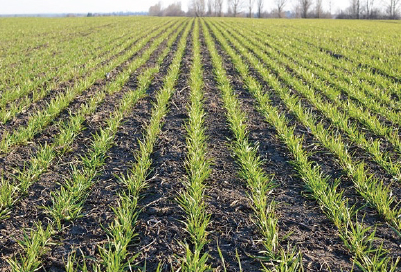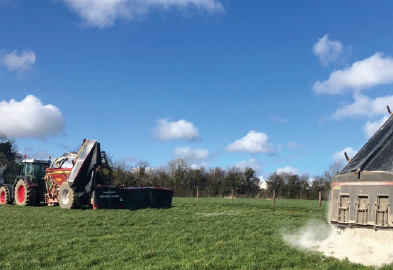 |
It has been extremely difficult to get field work done in the month of November. Very little spraying was carried out, small pockets of acreage were sown, and a lot of acres will now be switched to spring cropping. This can upset our rotations so be careful when choosing cropping strategies. As a result, winter cereal acreage will be down a lot compared to the 2021/2022 season.
Soil temperatures are now beginning to cool, but some growth still exists where soil temperatures are >6 degrees Celsius. Many late September/Early October sown cereal crops are quite advanced at present, due to milder than normal weather conditions for this time of the year. Keep a close eye for diseases that favour such weather such as powdery mildew and net blotch.
As we move into December, all field work should be finished. However, continue to assess fields for adequate weed control. Monitor slug and aphid pressure, particularly on fields which were late sown. Where fields are trafficable, there is still time to apply autumn herbicides, particularly on the likes of winter barley where annual meadow grass is problematic. Once this weed begins to tiller, it is too late for adequate control.
 Colder temperatures and increased rainfall as we approach the year end should reduce pest populations. Keep an eye out for crow damage to late sown crops where they have taken longer to emerge.
Colder temperatures and increased rainfall as we approach the year end should reduce pest populations. Keep an eye out for crow damage to late sown crops where they have taken longer to emerge.
 For oilseed rape crops, the majority have formed nice, dense canopies. Few crops needed growth regulation heading into the winter months. Thick canopies make it difficult for pigeons to land and start grazing. Monitor open crops of rape as pigeons can do serious harm if left alone.
For oilseed rape crops, the majority have formed nice, dense canopies. Few crops needed growth regulation heading into the winter months. Thick canopies make it difficult for pigeons to land and start grazing. Monitor open crops of rape as pigeons can do serious harm if left alone.
With the increased costs of fertiliser, green area index is a vitally important source of Nitrogen for crops, as nitrogen is stored in the leaves.
Nutrient Management Planning
December is an important month to think about nutrient management planning. Firstly, ensure that all fields have an up-to- date soil analysis report and if not, organise a soil test with a Drummonds Technical Sales Advisor as soon as possible. Without an up- to-date soil test, that field will be deemed to be index 4 for P and no P will allowed to be spread, according to new regulations.
Recent analysis by Teagasc found that 88% of all soils tested are deficient in one or more elements such as Phosphorous (P) or Potassium (K). Drummonds can carry out soil testing, soil mapping and variable rate lime spreading on your farm based on your soil test results. Ensure your soil has the correct pH to get the best use of fertiliser next year and to allow savings to be made to your pocket in the long term. Lime may be needed before spring crops.
Finally, as we approach the end of the year, it is a good time to sit down and assess farm records. Where can the farm be improved in terms of profitability, productivity and sustainability? A good place to start is with the soil.
 Contact your local Drummond’s branch or technical sales advisor for more information.
Contact your local Drummond’s branch or technical sales advisor for more information.
 |

